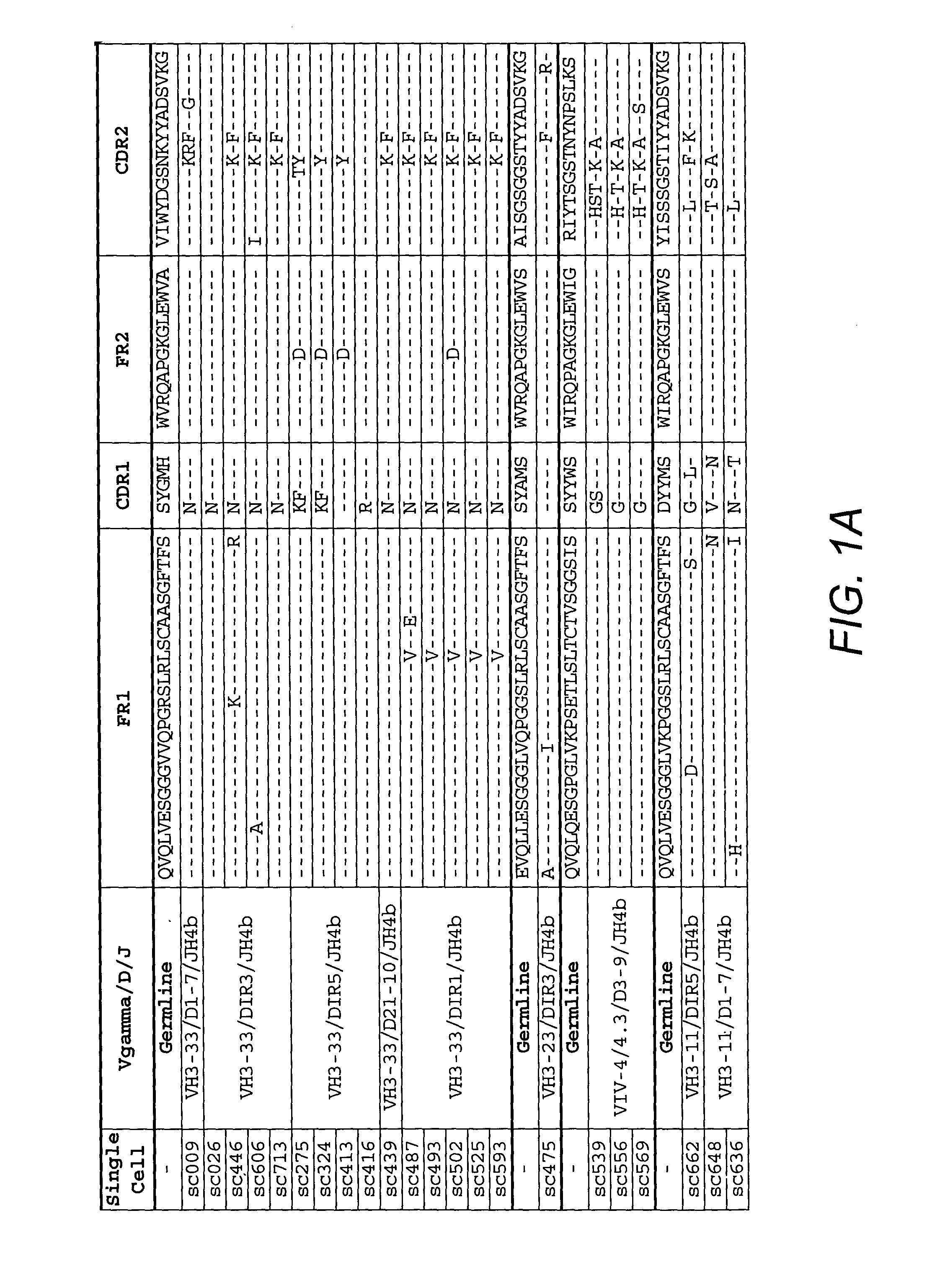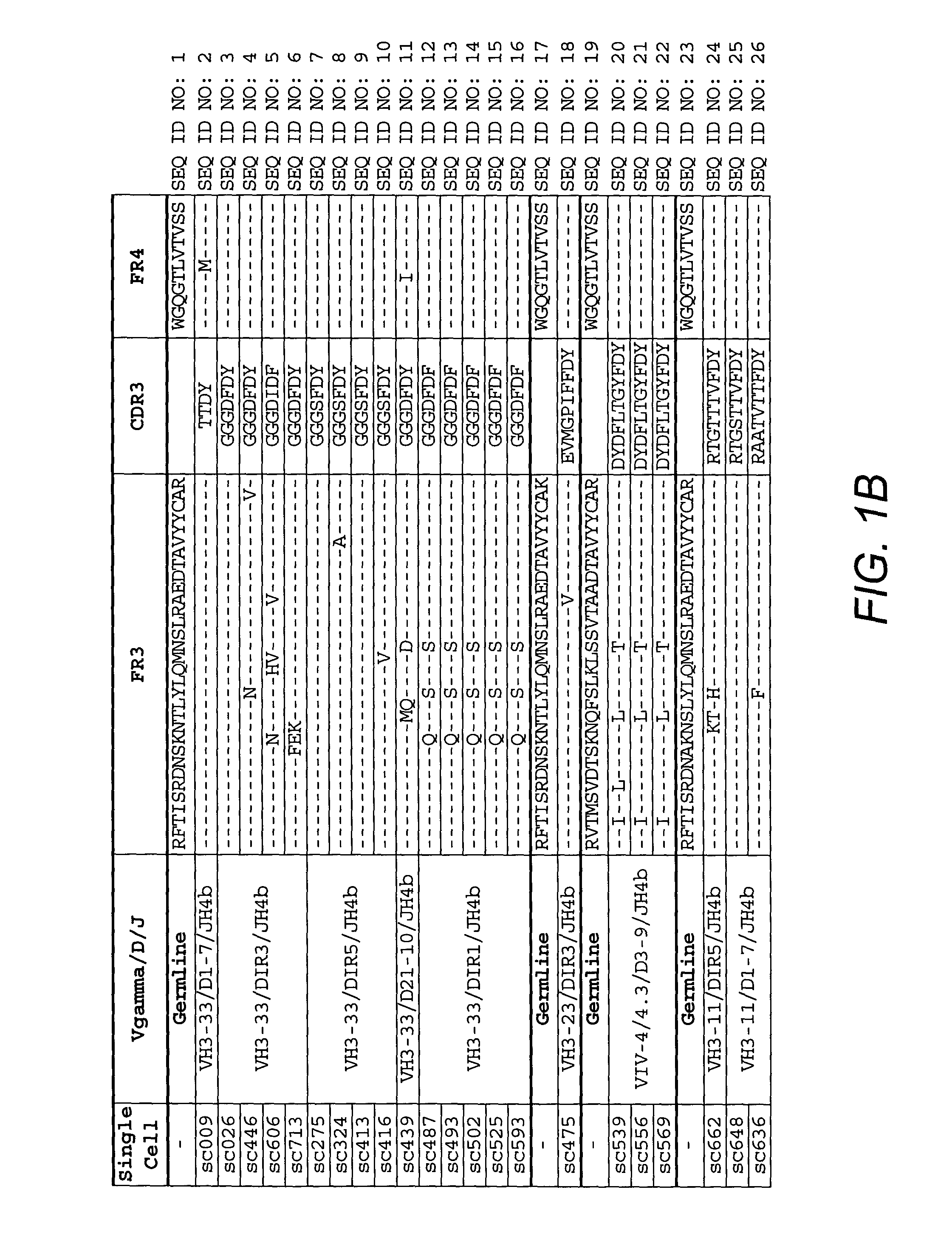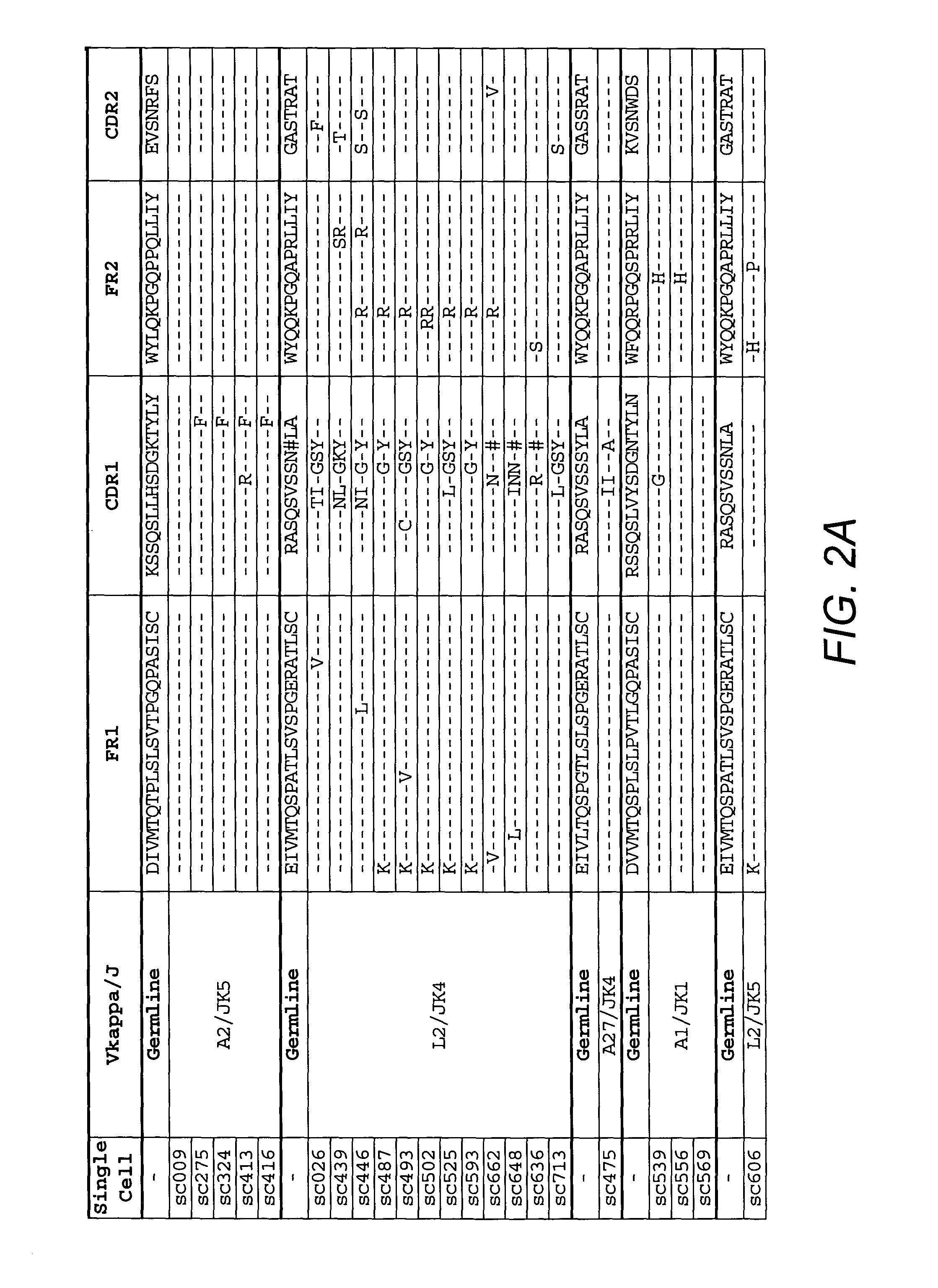Anti-CD45RB antibodies
a technology of anti-cd45rb and antibodies, applied in the field of fully human antibodies, can solve the problems of anti-cd45rb antibodies showing therapeutic efficacy, not fully human, and inducing reactions, and achieve the effect of blocking undesirable reactions
- Summary
- Abstract
- Description
- Claims
- Application Information
AI Technical Summary
Benefits of technology
Problems solved by technology
Method used
Image
Examples
example 1
Immunization of the XenoMouse Animals
[0072]Monoclonal antibodies against CD45RB were developed by sequentially immunizing XenoMouse animals (XenoMouse® XG2, Abgenix, Inc. Fremont, Calif.) with various CD45RB antigens (see Table 2). In some cases the mice were immunized with the 5 human CD45RB peptides detailed in Table 3. In other cases, the mice were immunized with a mixture of the peptides and CEM, a T cell line which naturally expresses CD45RB. Alternatively, HEK-293 cells that were transfected with a plasmid to express the full-length CD45RB were used. In addition, TCE was added to provide antigen-independent T cell help to B cells. TCE is a T cell epitope which when conjugated to antigen will provide antigen-specific B cells with MHC class II restricted T cell help. The T cell help will provide antigen-specific B cells with the signals required for clonal expansion, class switching, somatic hypermutation and differentiation to plasma cells.
[0073]The immunization schedules are p...
example 2
Screening for Antibodies which Secifically Recognized Human CD45RB
[0078]Two screens were used to identify antibodies in the pooled supernatant which specifically recognized CD45RB.
[0079]The first screen was the Native Binding Assay and involved identifying whether the antibodies bound to CHO cells expressed either CD45RB or CD45RO. The native binding assay was conducted on CHO cells transiently expressing full length CD45RB. Supernatants were qualitatively assessed and ranked for relative binding by eye or using FMAT technology (see FIG. 3) as follows:
4.84 Native Binding Assay in Transiently Transfected CHO Cells.
[0080]1.1 CHO cells were transiently lipofected with full length CD45RB or CD45RO.[0081]1.2 After 48 hours, the cells were trypsinized and seeded in Terasaki dishes (5000 cells / well). The cells were cultured overnight at 37° C.[0082]1.3 Culture media was removed and cells were stained with 10 uL of B-cell culture supernatant for 2 hours on ice.[0083]1.4 The monoclonals 6G3 ...
example 3
Identification and Isolation of a CD45RB-specific Plasma Cells
[0106]After the well of interest was identified, the specific B cell was identified and isolated using the hemolytic plaque assay. The assay was performed using sheep red blood cells (SRBCs) coated with biotinylated peptide antigen. The B cells from the well of interest were thawed and plated. Then the peptide-coated SRBCs were mixed with the plasma cells. Complement was added as well as antisera that recognized the human antibodies. The cells of interest showed a zone of lysis in which the SRBCs were lysed around the plasma cell which was expressing and secreting the antigen specific antibodies.
CD45RB-specific Hemolytic Plaque Assay:
4.84 Biotinylation of Sheep Red Blood Cells (SRBC)
[0107]1.1 Completely re-suspend the 25% stock of SRBCs stored in RPMI media by rocking the tube back and forth several times.[0108]1.2 Aliquot 1.0 ml of 25% stock into a 15 ml falcon tube. Spin cells down and remove supernatant then add or rem...
PUM
| Property | Measurement | Unit |
|---|---|---|
| pH | aaaaa | aaaaa |
| pH | aaaaa | aaaaa |
| concentration | aaaaa | aaaaa |
Abstract
Description
Claims
Application Information
 Login to View More
Login to View More - R&D
- Intellectual Property
- Life Sciences
- Materials
- Tech Scout
- Unparalleled Data Quality
- Higher Quality Content
- 60% Fewer Hallucinations
Browse by: Latest US Patents, China's latest patents, Technical Efficacy Thesaurus, Application Domain, Technology Topic, Popular Technical Reports.
© 2025 PatSnap. All rights reserved.Legal|Privacy policy|Modern Slavery Act Transparency Statement|Sitemap|About US| Contact US: help@patsnap.com



